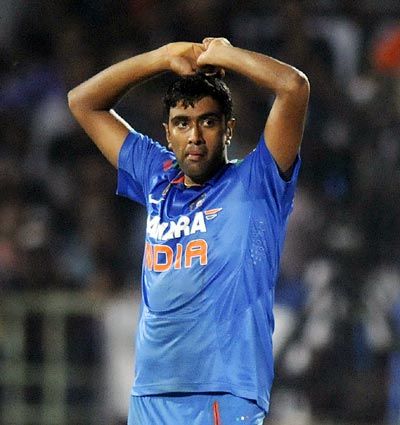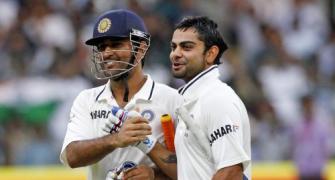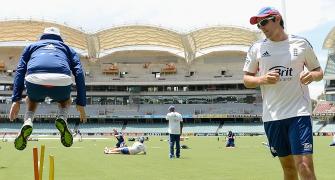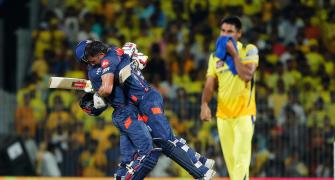 The new ODI rules may have demoralised bowlers during the recent India-Australia seven-match series, which saw 300-plus scores being comfortably chased down by both teams. However, the ICC hailed the rule change on Tuesday, as "good success, overall".
The new ODI rules may have demoralised bowlers during the recent India-Australia seven-match series, which saw 300-plus scores being comfortably chased down by both teams. However, the ICC hailed the rule change on Tuesday, as "good success, overall".
"The ICC Cricket Committee meets once a year and the next meeting will be in May 2014. We have had a number of changes in recent times in the ODI playing conditions. We wanted to keep things as stable and as consistent as possible leading up to the (2015) World Cup in Australia and New Zealand. Overall, it has been a good success.
- Dhoni bags 2013 ICC People's Choice award
"Overall, if you look at the results so far using the fielding restrictions, we are seeing that the total runs scored in an innings have more or less remained constant, compared to previous years before the new regulations being introduced," said ICC's Chief Executive David Richardson at a media conference in Mumbai.
- BCCI says demand for larger profit share from ICC 'legitimate'
"The average runs in a one-day innings is about 250 and the data shows that the only change is that a higher percentage of those 250 are scored in boundaries-fours and sixes, as opposed to ones and twos.
"This is one of the reasons why we introduced the fielding restrictions in the first place, to try and make the game more attacking and more exciting. There are more wickets falling and more boundaries being scored and the totals on an average are remaining the same," he insisted.
However, he conceded that bowlers are having a tough time coping with the new rules in the sub continent.
"You do find wickets which are really flat, don't spin, don't seam and the bowlers really have a hard job. Conditions vary across the world, and certainly in sub-continent, where you find yourself on a good batting pitch that is taking no spin, no seam movement; the bowlers really have their hands full."
The former South Africa wicketkeeper-batsman pointed out that the bowlers had more of a say in ODIs played in countries like England and South Africa.
"If you look at the results all over the world in other conditions, like England, Australia, New Zealand, South Africa, you will find that the new fielding restrictions have worked well.
"Also the fact that we are using two new balls as opposed to one has allowed the bowlers to take more wickets, especially in the first 10 overs when the seam bowlers are at the batsmen. This has also worked well," he added.
Richardson confirmed that directives would be issued to curators in Australia and New Zealand for the 2015 World Cup, similar to what had been done in 2011 when the mega event was held in India, Sri Lanka and Bangladesh, for preparing batsmen-friendly pitches.
"Certainly, for ICC events, we do give directions to the host countries as to the preparation of the pitch. It will be the same as the World Cup that was held in the sub-continent. The difference being that in Australia and New Zealand conditions, they tend to be more seamer-friendly as opposed to spin-friendly (sub-continent pitches).
"So our direction would be we want a pitch that provides good bounce but not too much lateral movement, in this case seam movement. Generally, in one-day cricket, we try to favour the batting team and we look for totals of between 230 and 260.
Image: Ravichandran Ashwin was at the receiving end from batsmen during the recent ODIs against Australia and the West Indies
Photograph: BCCI










